Our extension in Oman was run by Zahara Tours. They were great.
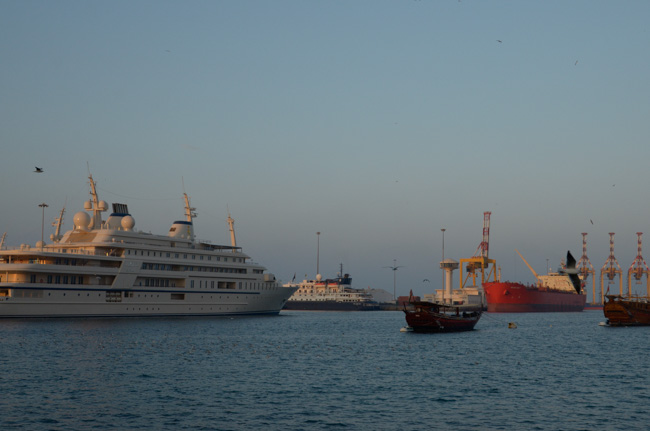
About one-third of our number had chosen the four-day expedition into the interior of Oman. It turned out to be the most enjoyable part of the entire trip.
Our ship is in the new harbor: the Sultan Qaboos port in Muttrah. The Island Sky is the small blue and white ship in the background. The larger white ship in the foreground is the Al Said, one of the sultan's yachts. The newer Fulk Al Salamah, even larger, is on the other side of it and isn't visible from this angle. The sultan cruises in style!
After our passengers left the ship, it proceeded to the Indian Ocean with a new complement of guests.
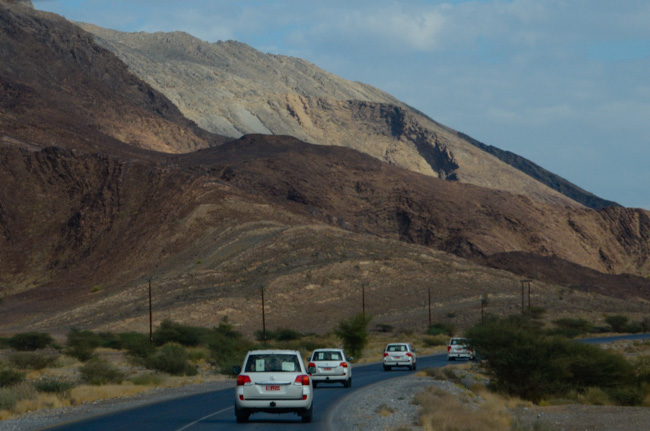
The extension group, after some confusion in which it looked like Jim and I might end up assigned to different cars, divided into SUVs for the rest of the trip. There were 12 vehicles (including a "spare") numbered creatively 1-12. We ended up in number five with another couple and a driver who introduced himself as "Mikey."
Toyota could use this tour company as an advertisement for their Land Cruisers. Those SUVs took a beating and kept on ticking. Whether road cruising, often at speeds in excess of 80mph, or dune bashing, they were comfortable vehicles and transported ourselves and our luggage with aplomb. The two we happened to ride in were both north of 70K miles on the odometer.
Although we saw pretty much every marque of auto on our trip, Toyota was the runaway favorite. There were limited sightings of US marques - mostly Chevy or Ford with the occasional Dodge Ram truck.
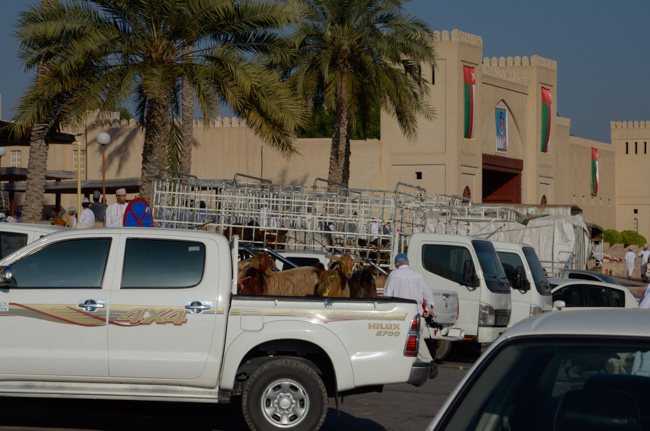
Our first destination was the Nizwa Goat Market. We visited on Friday, the busiest day. Goats aplenty, cattle, and even a couple of camels in the parking lot were on offer. We got there late by market standards and most of the goats had been sold. Cattle were the item now.
The crowds were such that even though our cavalcade tried sneaking in the back way (off the road and up a dry streambed), we had to abandon the cars and walk in. Our guides corralled stray tourists and formed us into two groups in the forlorn hope of keeping track of everyone in the crowd.
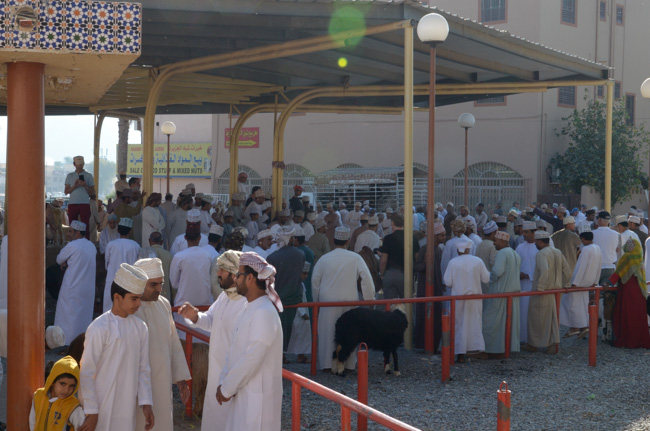
The auction area was jammed. This was the first place we had been that was almost all native Omani with very few expats and only an occasional tourist besides ourselves. The locals milled around buying and selling as well as catching up on the week's news.
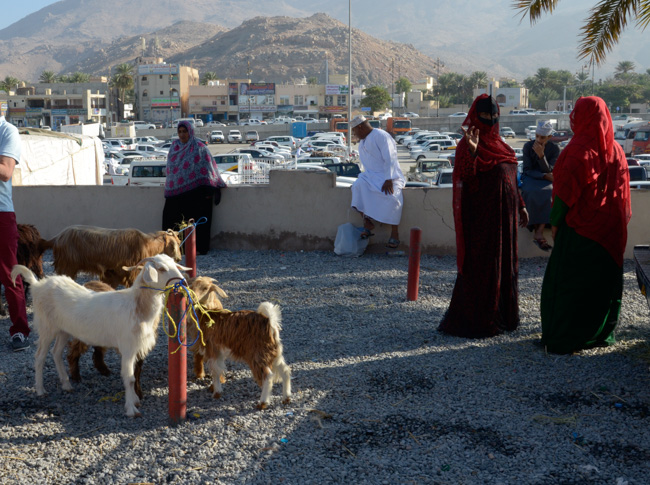
A quiet corner.
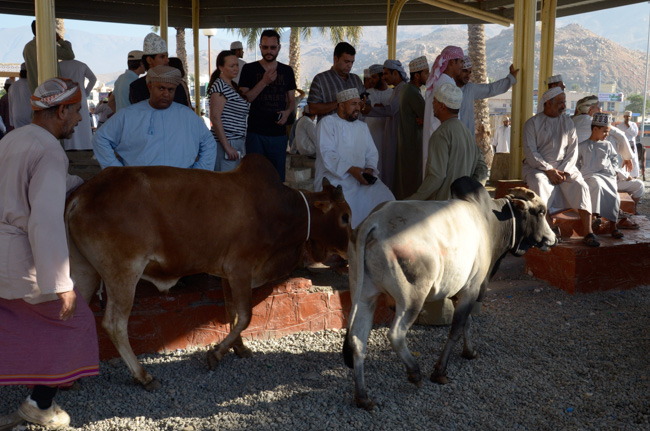
I was amazed at the docility of these young bulls. Their handlers led them around with a simple rope around the neck.
They are probably zebu or a related cross-breed. Similar cattle in the US are called Brahman. They were popular in the Deep south because of their resistance to heat.
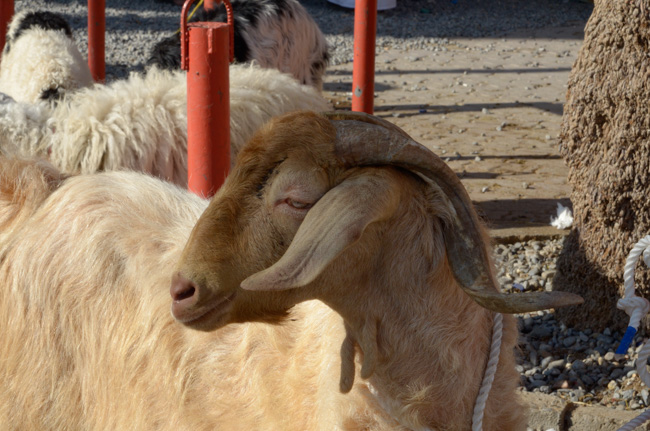
Many of the goats had impressive horns like this one.
The goats that we saw here were a big step above the numerous goats that roamed the highways and towns pruning the trees and shrubs. They seemed to fetch good prices too.
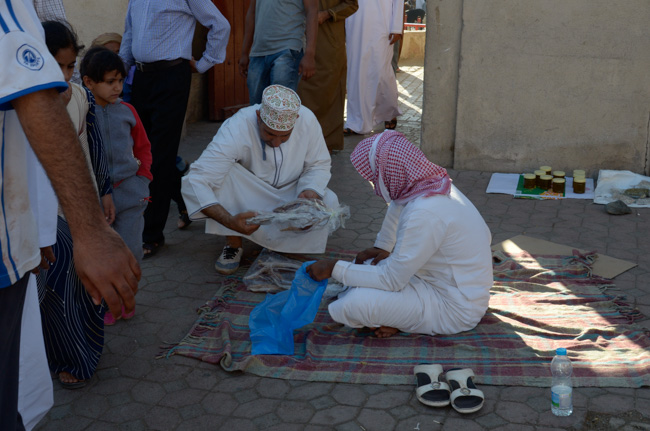
In addition to livestock, the market included many other wares. This man is selling dried fish. We also saw dried eels.
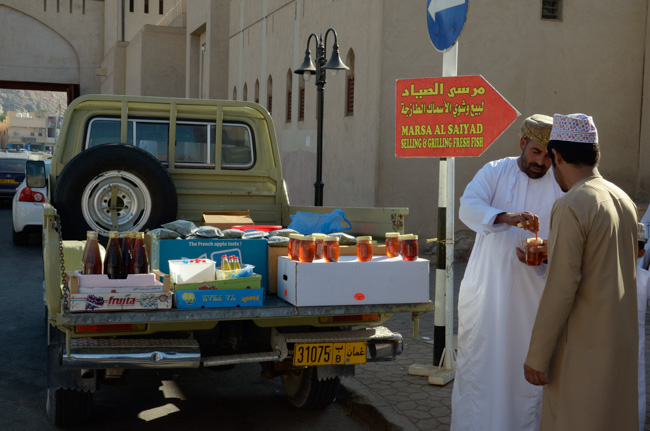
Fruit juices and honey.
Throughout Oman signs were usually in both English and Arabic. In Muscat the English text was often larger than the Arabic. It is the lingua franca between natives and expats.
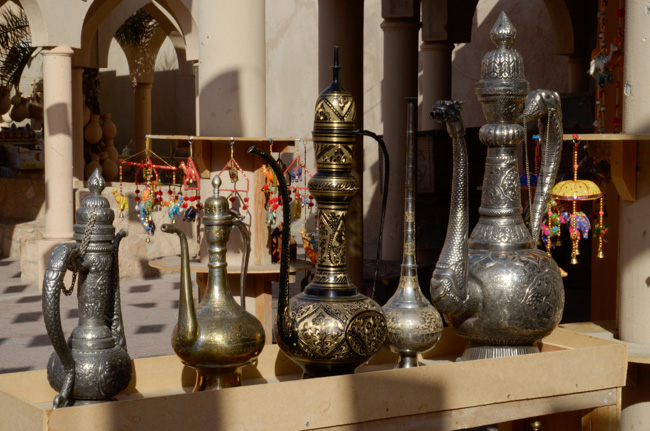
Coffeepots for the tourists.
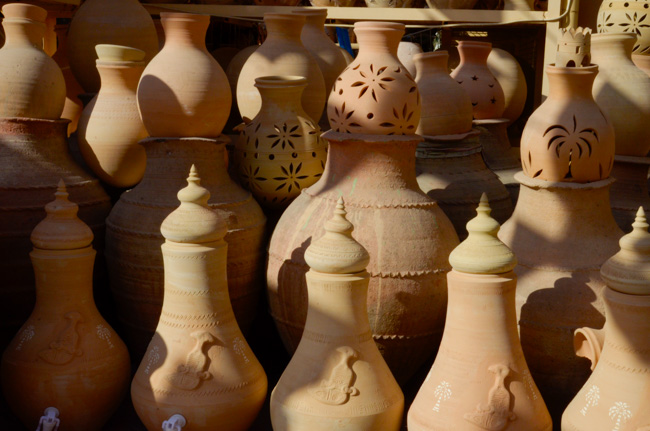
Pots and jars.
Water evaporates through terra cotta so these urns are designed to keep drinking water cool. I don't know the function of the perforated jars.
Although bottled water was available everywhere, the local tap water seemed perfectly fine at all the places we stayed.
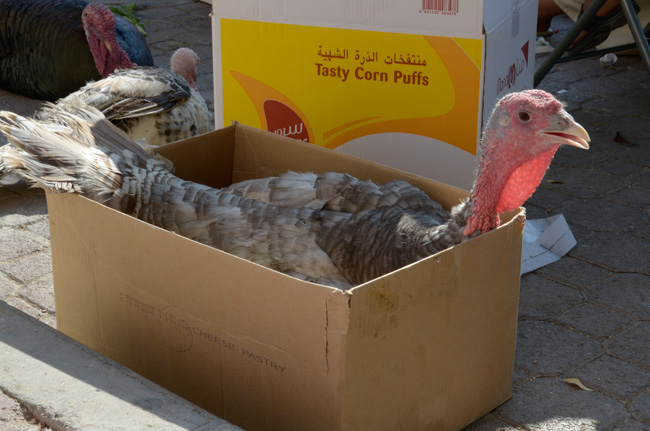
Turkeys were popular offerings. They seemed content to hang around either with a box or without. It's possible that their legs were tied.
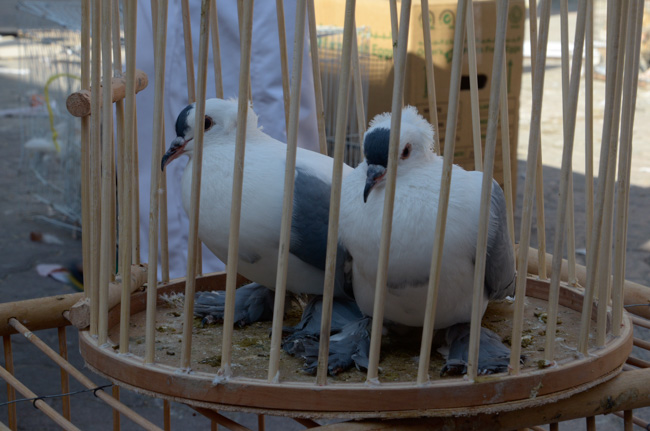
We saw many kinds of plain and fancy poultry varieties.
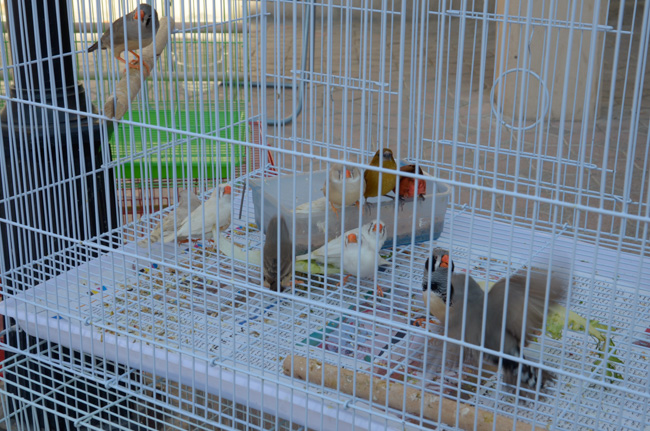
And pet birds.
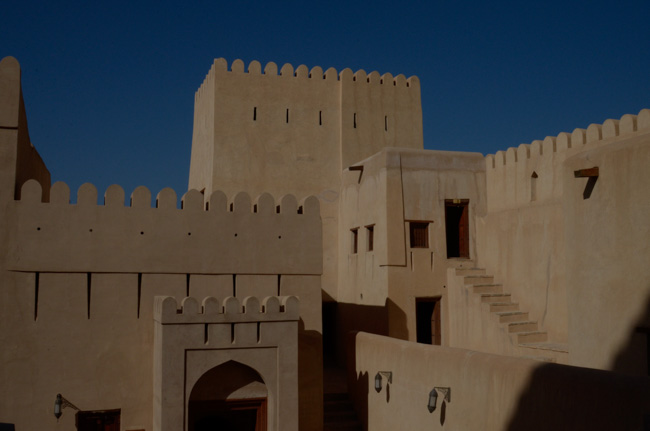
The other attraction in Nizwa was the fort. It is extensive in size and had many interesting exhibits. The city was the capital of Oman in the 6th & 7th centuries and was the place that first welcomed Islam into the area.
I couldn't get a good picture of the tower, so most of my pictures are FROM the tower. This one is at its base looking toward buildings with labyrinthine corridors and blind alleys.
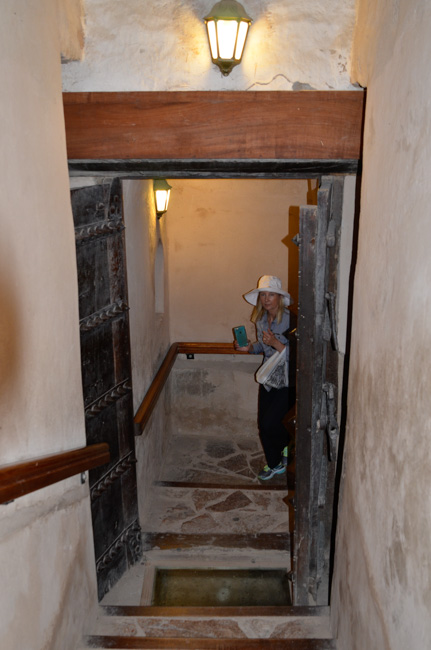
The stairway to the top of the tower was narrow, steep, torturous and booby-trapped. Pitfalls guarded just about every bend and there were places where hot oil (or sticky date juice) can be poured on attackers. One of the pitfalls can be seen here just beyond the doors. They have now all been covered with glass for the protection of unwary tourists.
The stairway would have been pitch black when the fort was in use and even today it is kept dark to provide a semblance of the experience. There is one light shown here at the last turning and one at the bottom. Since the stairs were also uneven, it was an adventure getting to the top. Even more so getting down! You were well-advised to keep a firm grip on the handrail.
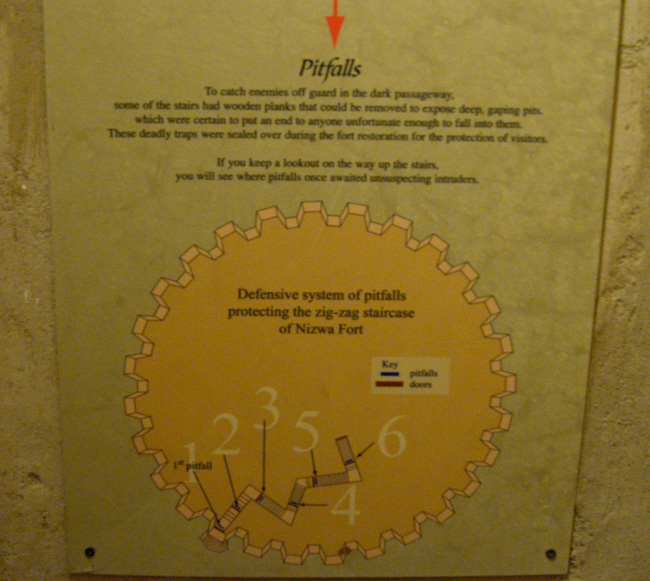
This diagram shows the stair.
The interior of the tower was filled with rubble and it could withstand heavy mortar fire.
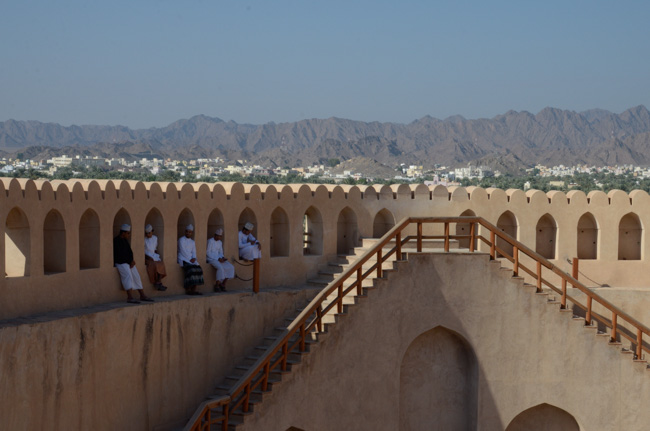
Once at the top of the staircase, there were additional steps to reach the parapet. The reward was a view of the surrounding countryside.
There were loopholes everywhere for the defenders to shoot attackers. I have not been able to determine if the fort was actually ever attacked by ground troops. During the Jebel Akhdar War of 1954-1959, in which Nizwa was a stronghold of the rebel forces, it was targeted by an air strike, but without major damage.
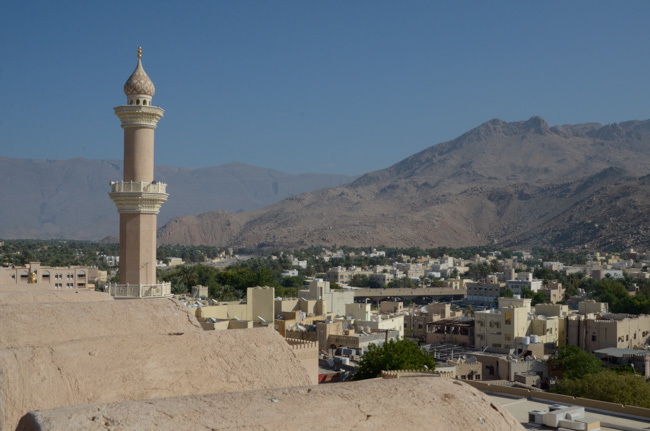
The view in the other direction overlooking the mosque.
Click your "back" button to return to the previous page or click for our picture album.